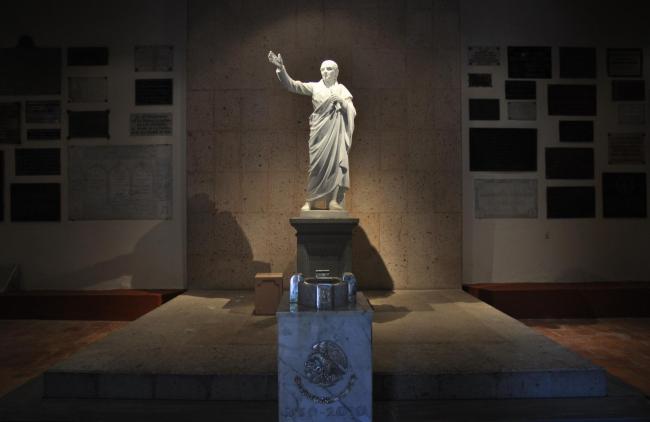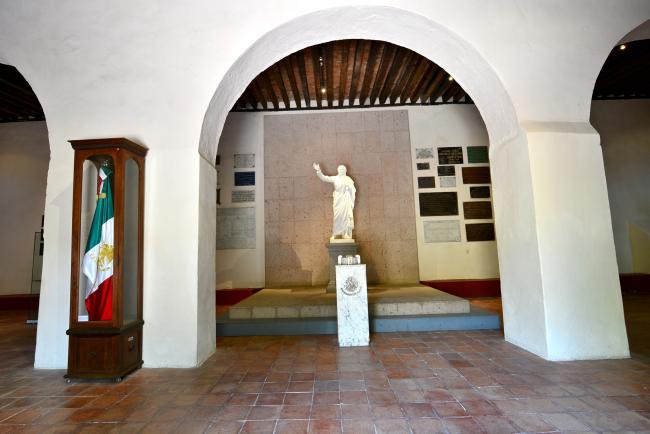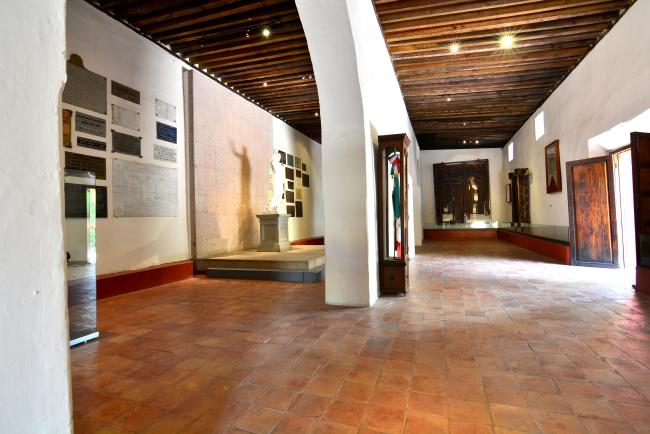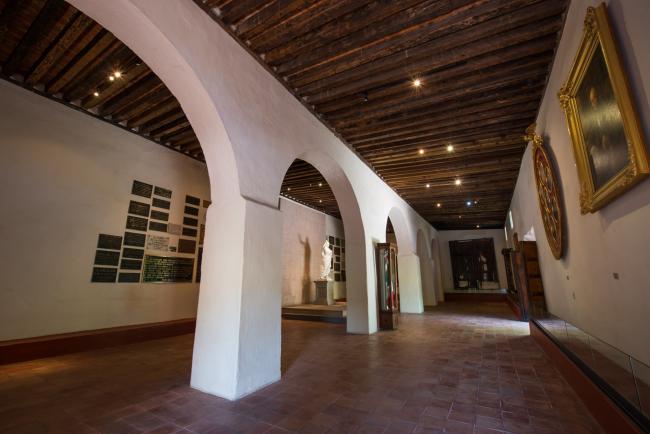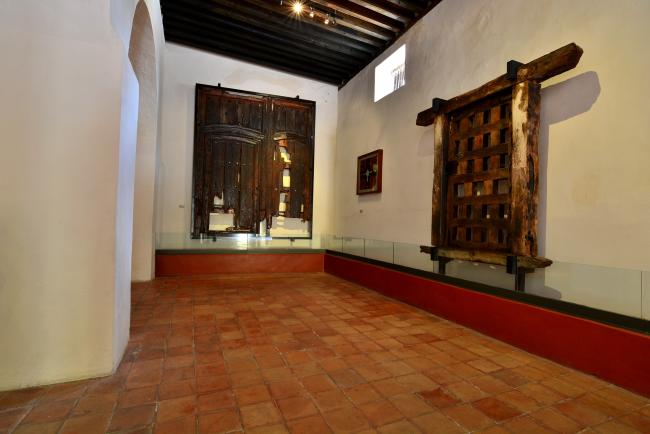
The Making of a National Hero
Sala
Miguel Hidalgo y Costilla was enshrined by 19th-century historians and artists as the “Father of the Nation,” becoming the central hero of Mexico’s pantheon. However, this wasn’t always the case. In the early years following independence, Hidalgo was recognized as the initiator of the fight for freedom, but the scars of the civil war (1810–1821)—with around 844 battles and an estimated 600,000 to 1 million deaths—remained fresh.
In 1849, the Liberal Party adopted Hidalgo as a symbol of republican and democratic ideals. In 1865, Emperor Maximilian commissioned a series of historical paintings, including a portrait of Hidalgo by Joaquín Ramírez. In it, the priest appears as a dignified elderly man at his writing desk, portrayed as a thoughtful intellectual and legislator.
During the Porfirian era, Hidalgo was exalted as a patriotic model, and his elderly image was emphasized, even though he was only 57 in 1810—a strong man used to riding long distances, accustomed to farm labor, and fond of hunting and bullfighting.
This space was originally the tithe warehouse, later repurposed during the War of Independence. Today, it is a place of homage to Miguel Hidalgo, and the museum uses this room to reflect on how his image as Father of the Nation was constructed over time.
On display are several 19th- and 20th-century oil paintings, including "The Allegory of Independence" (1834), "Portrait of Miguel Hidalgo y Costilla" (1865), and a medallion with portraits of Hidalgo, Morelos, Guerrero, Matamoros, Allende, and Josefa Ortiz de Domínguez, painted by Anastasio Vargas in 1900. Original items from the house, such as a 19th-century door and window, are also exhibited.
Also featured is a funerary urn with silver medallions containing bone fragments of Miguel Hidalgo, Ignacio Allende, and José María Morelos, along with another urn housing the remains of insurgent and city chronicler Pedro García (1790–1873).


